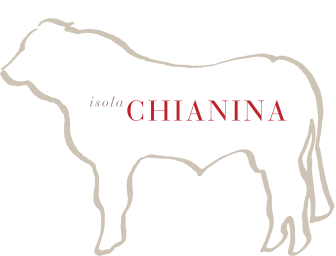History
It is believed that the Chianina breed originated in the Bronze Age from animals brought to Italy from Asia and Africa in 1500 BC – making Chianina one of the oldest (if not the oldest) pure-bred bovine breeds. Thy have been raised in Italy for more than 22 centuries, deriving from Bos Taurus.
Chianina's ancestors were used by the Etruscans as sacrifices to their Gods, and we have Roman sculptures depicting the breed, with the Romans drawing on the breed both for plough-pulling and as a food source. Thus, Chianina are deeply rooted in Tuscan history, with their snow-white coats and huge size seeing them feature in triumphal parades and countless festivities, even in modern Italy. From a modern farming perspective, the breed has been surperseded by tractors in the field, so that today, the cattle are primarily used for their meat – and considered some of the most prized meat producers in the world.
1974 saw the first Chianina semen was imported into Australia (via Canada). As the breed is slow growing and not ideally suited to standard commercial production, their numbers here are still small. This has seen them predominately used for cross-breeding: their growth rate, especially long legs, high quality meat and heat and disease tolerance making them a sought after cross-breed.
The fact that they were bred as work animals supports the premise that Chianina are gentle and largely good tempered. Born a caramel colour that lightens up with age, they are characterised by their short white hair, and their black skin and mucosa. They are huge cattle with extensive and well defined muscles - with their shoulders, back and rear quarters being especially well formed. The meat is red and lean but still retains a marbling of fat through the muscling.

